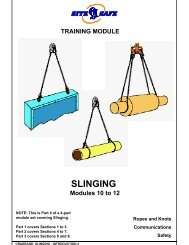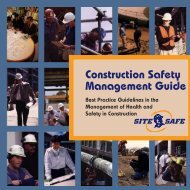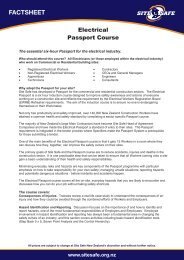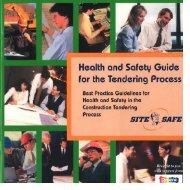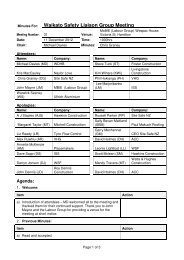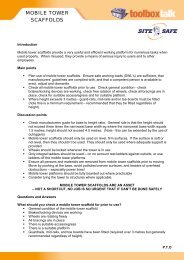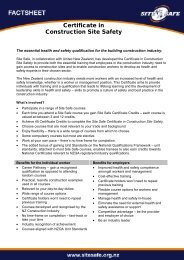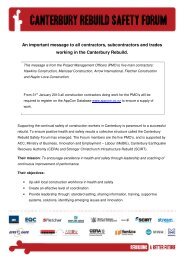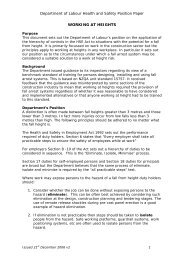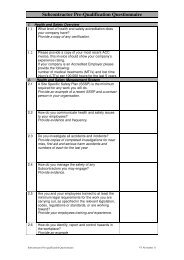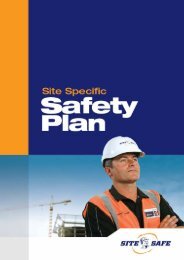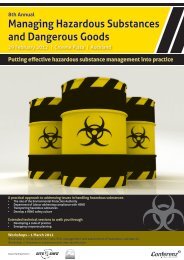SAFETY INSITE WINTER 2011 - Site Safe
SAFETY INSITE WINTER 2011 - Site Safe
SAFETY INSITE WINTER 2011 - Site Safe
You also want an ePaper? Increase the reach of your titles
YUMPU automatically turns print PDFs into web optimized ePapers that Google loves.
PERSONAL<br />
PROTECTIVE<br />
EQUIPMENT -<br />
HARD HATS<br />
• Ultraviolet radiation (UV) and extreme heat can reduce the strength of the hard hats.<br />
Damage caused by UV can be identified as the hard hat will lose its glossy finish and<br />
eventually take on a chalky appearance.<br />
• A hard hat may be cleaned by immersing in warm water and detergent, scrubbing, and<br />
rinsing in clear warm water.<br />
• Sweat bands must be regularly replaced as required for hygiene purposes.<br />
• Unauthorised modifications to the shell and harness are not permitted<br />
BETTER HELMET THAN HELL MET<br />
Activities<br />
Spend a few minutes discussing the specific tasks/activities on your site. What are the hazards?<br />
Which activities could harm your head? What PPE is available? Who are the trained first aiders?<br />
This is also a good time to go over the correct usage of hard hats – ensuring PPE is not damaged in<br />
any way, is being worn correctly and fits properly etc.<br />
Questions and Answers<br />
When must hard hats be worn?<br />
• If told to do so by your employer or main contractor.<br />
• If signage says it’s required.<br />
• If hazard board says head protection required.<br />
• If hazards have been identified that require head protection.<br />
How do you identify signs of wear or damage to a hard hat?<br />
• The loss of its glossy finish and having a chalky appearance.<br />
• Any puncture or cracking of helmet shell.<br />
• Any deterioration or damage to the hard hat harness.<br />
• Any damage to the connections between harness and shell.<br />
How do you correctly store a hard hat when not in use?<br />
• In a cool, dry environment.<br />
• Away from direct sunlight or heat sources.<br />
• Away from heavy or sharp objects and chemicals.<br />
Related Topics<br />
1. PPE - Eyes<br />
2. PPE – Clothing<br />
3. PPE – Ear Protection<br />
4. PPE – Skin<br />
20




